Mariton: What’s Happening with wild turkeys?
by Tim Burris, Preserve Manager
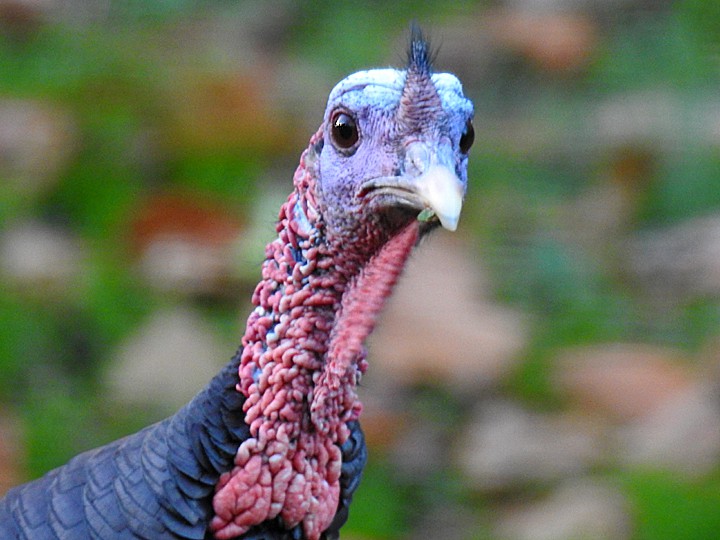
Photo by Carole Mebus.
Wild Turkeys showed up at Mariton in the 1990’s. There was quite a large population in the township and it was just a matter of time before they started nesting here. Turkey populations were exploding locally while at the same time our Ruffed Grouse population was declining. The grouse declined because our forest matured and the habitat changed. The turkeys appeared because their populations were growing and they were moving into every available space.
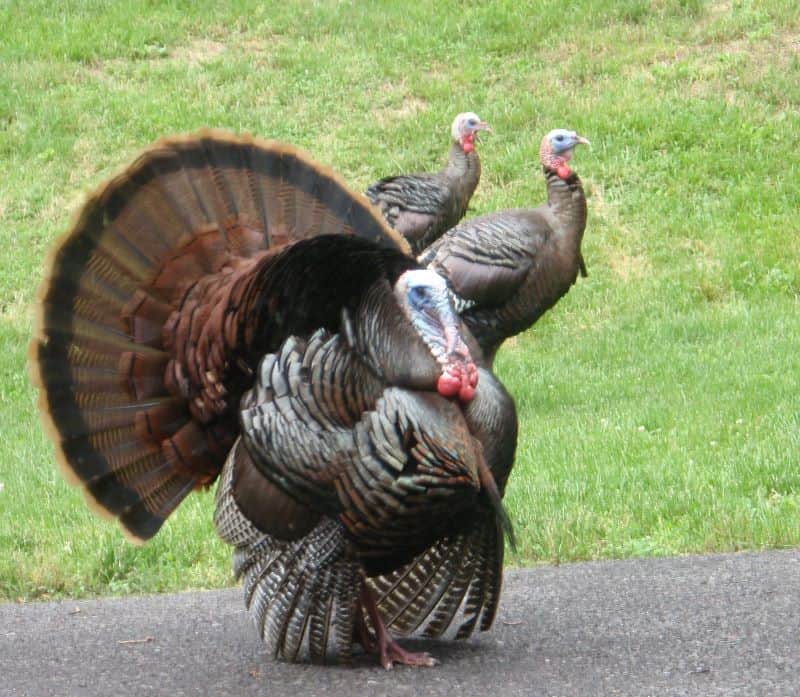
Photo by Tim Burris.
Mariton’s Breeding Bird Census (which dates back to 1981) has the first sighting of Wild Turkeys in 1996*. By the early 2000’s turkeys were quite common at Mariton throughout the year. That lasted until about 2015 when we were seeing them less and less. But during that period it was not unusual for me to come across a dozen or more turkeys while working at Mariton. *Because the census is a one-day sample, sightings predated 1996. From the mid-1990’s for two decades was the heyday of Wild Turkeys at Mariton. Incidentally, the last census date for Ruffed Grouse was 1995.
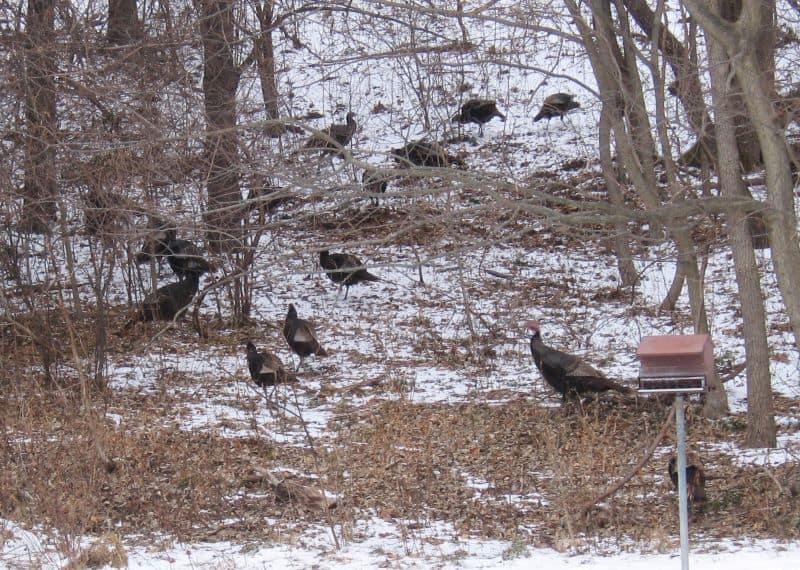
Photo by Tim Burris.
So, why have turkey populations declined? While habitat played a critical role in the displacement of Ruffed Grouse at Mariton, it was less important to Wild Turkeys, at least here. The things that seem to affect turkey populations the most are early predation and springtime weather. Diseases and managed hunting seem to have little affect on the rise and fall of turkey populations. And there are places where turkeys populations have remained stable. Turkey biologists are puzzled by the declines that followed the extreme rise of turkey populations in different parts of the United States. They hold conferences and conduct research to try to find answers. While they don’t have all the answers, here a few things that they do know.
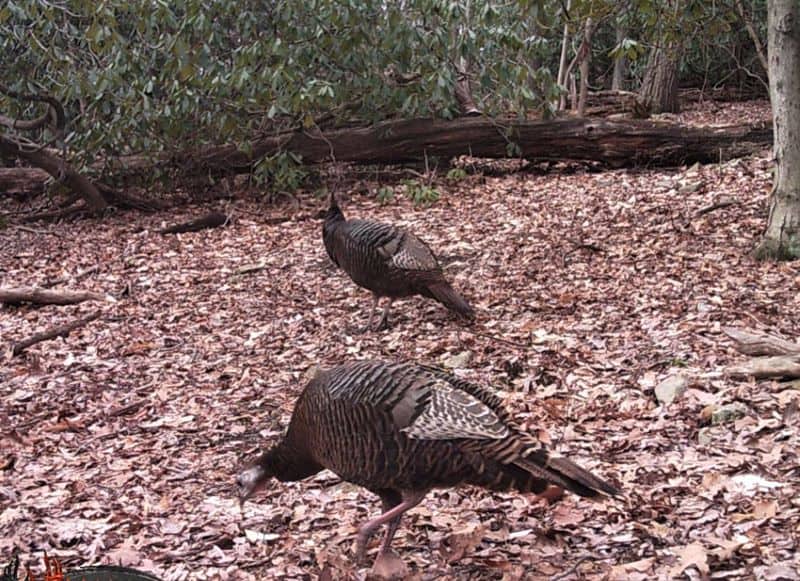
Photo by Tim Burris.
1)Steep rises in populations are often followed by declines. Turkeys like other game animals were in bad shape by the beginning of the Twentieth Century. Hunting regulations were adjusted, and organizations like the National Wild Turkey Federation were established to fund research and habitat projects. Wild Turkeys became a game management success story, and we saw those results at Martion at the turn of the Twenty-first Century. Those burgeoning populations eventually exceeded the availability of prime nesting habitat. Turkeys had to adjust to the habitat limitations and populations leveled off. This would explain some of the decline.
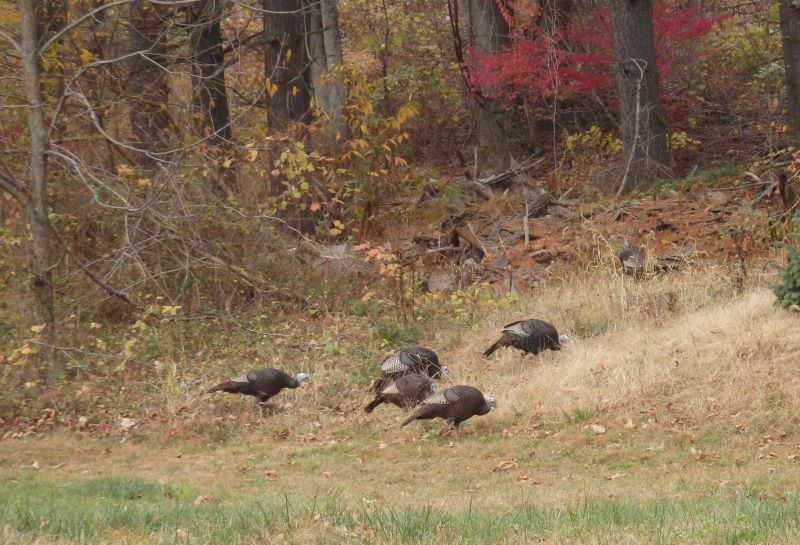
Photo by Tim Burris.
2)Springtime weather is what I think was the biggest influence at Mariton. Our weather has changed, and wet cold springs can be very hard for certain bird species to survive. Turkeys are precocial, which means they leave the nest when they hatch, and find their own food. The hen stays with her brood and watches over them, but the young still aren’t fully feathered. Foraging through wet fields and forests means the poults are getting soaked. Without a fully developed feather system they are prone to hypothermia, not to mention finding their insect food is more difficult when the vegetation is soaked. This century I have lost more broods of Eastern Bluebirds because their parents couldn’t find enough food during wet cold springs. I am sure that Wild Turkey young suffered similarly in our area as our springs have gotten wetter and colder.
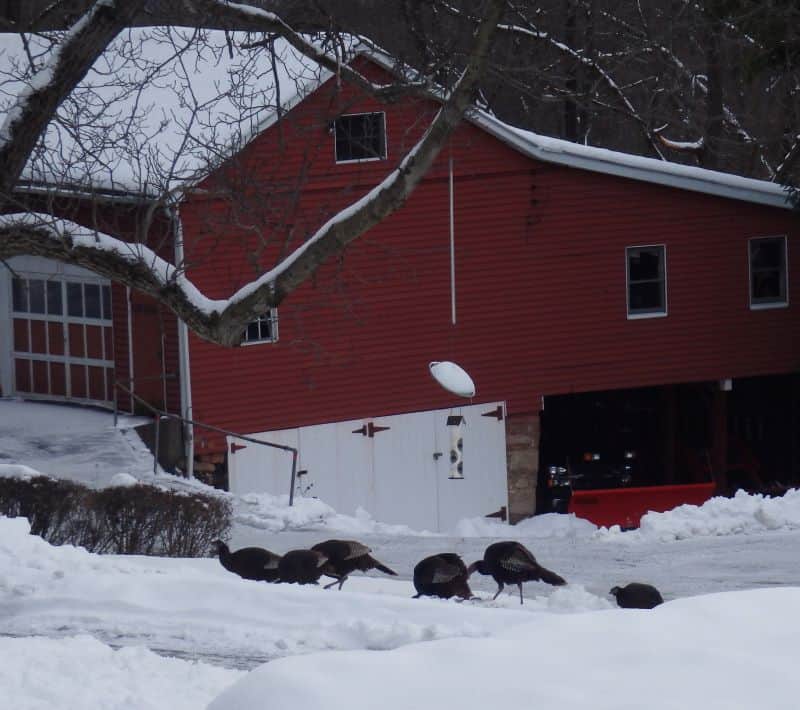
Photo by Tim Burris.
3)The predation/habitat connection. Predation of nests and turkey poults has a large affect on limiting turkey populations. Turkeys often select edge habitats, but so do racoons, opossums, foxes, dogs, cats, etc. All of these things prey on eggs or young turkeys. And humans seem to be promoting landscapes that favor nest predators over landscapes for native ground-nesting birds. When was the last time you saw a harvested corn field with standing stubble? Not to mention all the development. While nesting habitat remains healthy at Mariton, the Red Fox population is also healthy and could be affecting the population on the hill.

Photo by Carole Mebus.
From listening to biologists and turkey hunter observations these are things that I know are affecting the turkey population. Is it the final word? Absolutely not. These are just some of the things that we know. But to paraphrase Donald Rumsfeld: we don’t know what we don’t know. There could be other factors that affect Wild Turkey populations that we haven’t even thought to consider. While populations have dropped in many places, they are still healthy populations of Wild Turkeys in Pennsylvania. Turkeys deservedly remain one of those iconic species for nature watchers, historians, and hunters.
